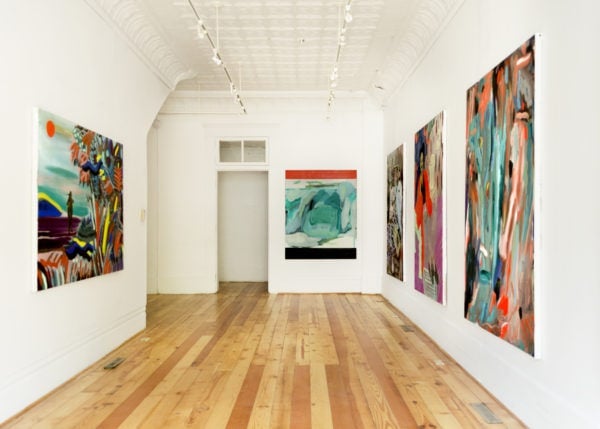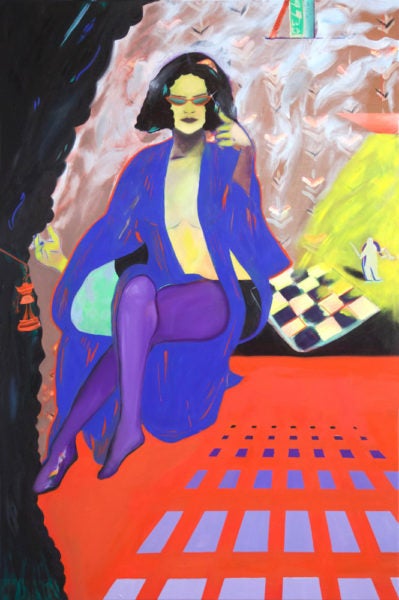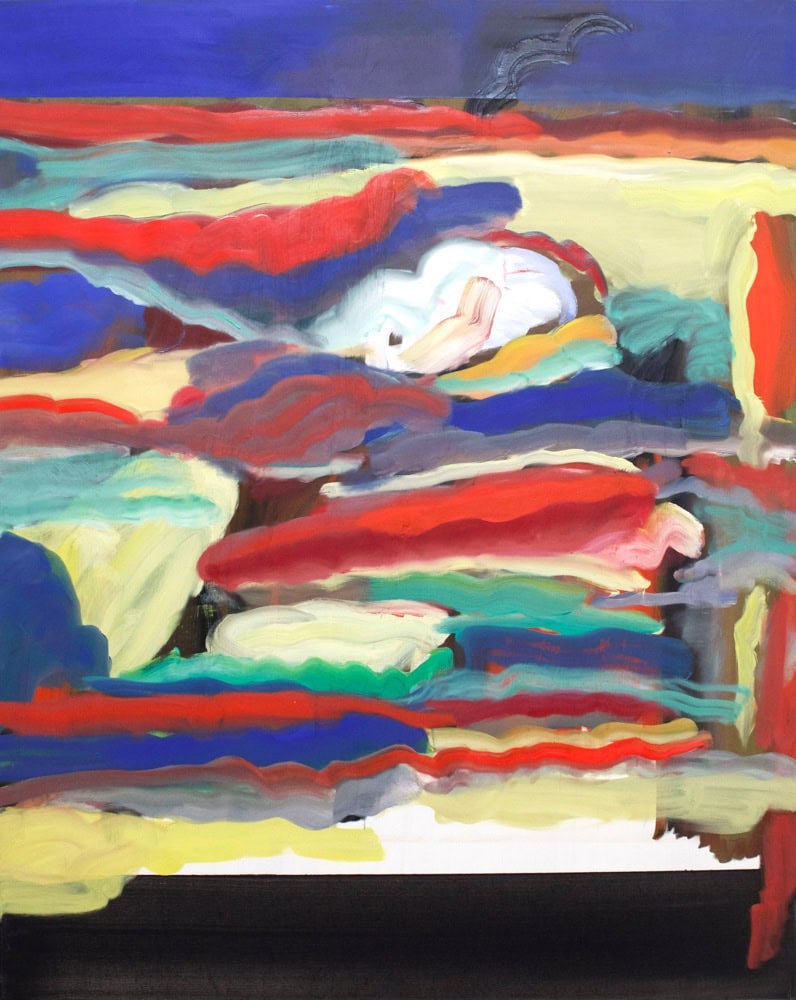
The paintings currently on view in San Francisco-based artist Melissa Carter’s solo exhibition “New Masters” at Institute 193 in Lexington are small neither in scale nor ambition, addressing the art-historical misogyny of previous generations of male artists as well as more contemporary concerns with sexual assault and harassment in the wake of this year’s #MeToo movement.

Though the feminine subjects in some of Carter’s paintings may imitate the poses of those in works by artists such as Matisse and Rousseau, these colorfully rendered women offer a strong but sly sense of presence and self-possession. The titles of certain works, such as Chess Master with Blue Gown and Astronaut in Red Jacket, assign prestigious occupations and pursuits to these women while also pointing out details about color and fashion. No longer portrayed as mistresses or paramours as they may have been in centuries past, the women in Carter’s paintings return focused, knowing gazes that appear to mock or challenge viewers. Partially due to the flattened quality of the scenes depicted in Chess Master and Astronaut, a visual tension emerges between the implied substance of the figures in the image and the seemingly smooth surfaces of some of the garments they wear.
In the title of her painting Diebenkorn Fellow, Carter references Bay Area abstract expressionist Richard Diebenkorn, best known for his Ocean Park paintings, who has been characterized as the heir of Matisse’s legacy. Instead of airy pastel geometries executed in Diebenkorn’s signature style, Carter’s painting shows a cloudy figural representation of a female painter who, though she’s depicted as faceless, appears to be looking directly at the viewer. Striated clouds appear within the outline of her body; only her tennis shoes (Adidas, perhaps?) appear recognizably. From the right side of the painting, appearing to emerge as if from behind a drawn theater curtain, a blue hand interrupts the image on a different scale. The painting feels dark and serious, possibly less related to Diebenkorn’s work than to the fellowships offered at California institutions in the artist’s name. In the case of these fellowships, or many other similar fellowships across the arts and academia, what does it mean for women to gain access to resources and workspaces under the auspices of male, often white predecessors? What would it mean for a woman to be the heir to the heir of Matisse?

Other works, Cosby Sweater and Cosby Sweater #2, use a dynamic, playful palette suggestive of knit sweaters’ knotted lines as their visual language. Presented in the context of “New Masters,” these paintings conceptually tie together art-historical misogyny with present-day conversations about figures such as Bill Cosby—once known as “America’s dad” but recently convicted of sexual assault—whose cultural significance has been forever altered by evidence of their violence against women. Here, the contrived supposed associations of abstract expressionism with virility and masculine energy seem more suspect. Cosby’s name complicates what could be, in the hands of another painter, relatively innocuous, loose abstraction. Considered in a certain way, the Cosby paintings almost suggest the influence of a certain woman abstract expressionist: the painter Joan Mitchell.

Carter’s painting I’m an Oil Man provides a clever double entendre, visually riffing on the style of Mark Rothko’s rectangular paintings while also drawing a connection between the financial advantages men are afforded in terms of both art sales and industrial power. In addition to implicating the wealth associated with the commodity and natural resource of the same name, here oil and oil painting also serve as metaphors for traditional notions of (often masculine) greatness in the arts. Carter may engage these traditions—her paintings are, indeed, oil on canvas—but the vision of greatness she portrays is different from that provided by art history: a woman in possession of herself and her image.
Melissa Carter’s exhibition “New Masters” remains on view at Institute 193 in Lexington, KY, through Saturday, October 13. Last month, Institute 193 opened a collaborative project space, Institute 193 (1B), in New York City’s East Village, where the exhibition “Pasaquoyan in the City: Fashioning a Southern Saint”—a presentation of works by Eddie Owens Martin, aka St. EOM—remains on view through November 3.




